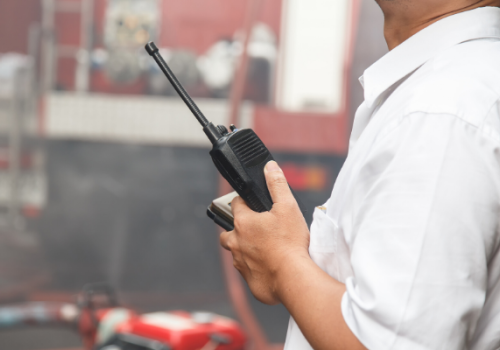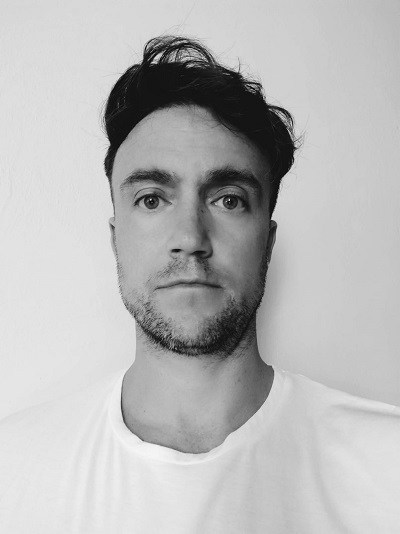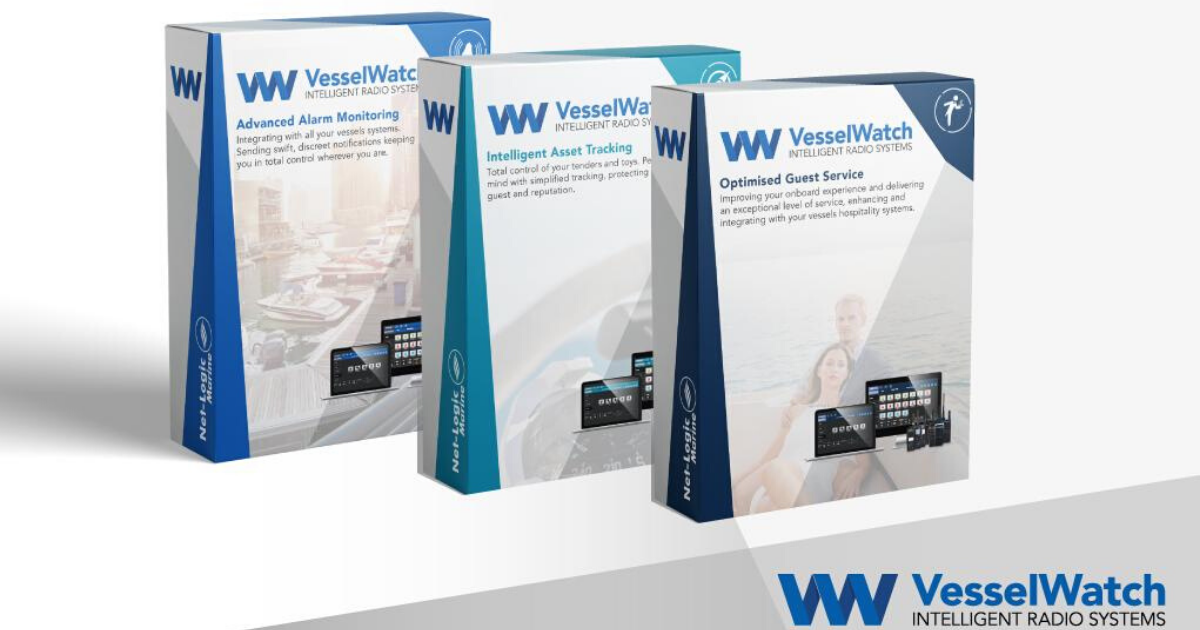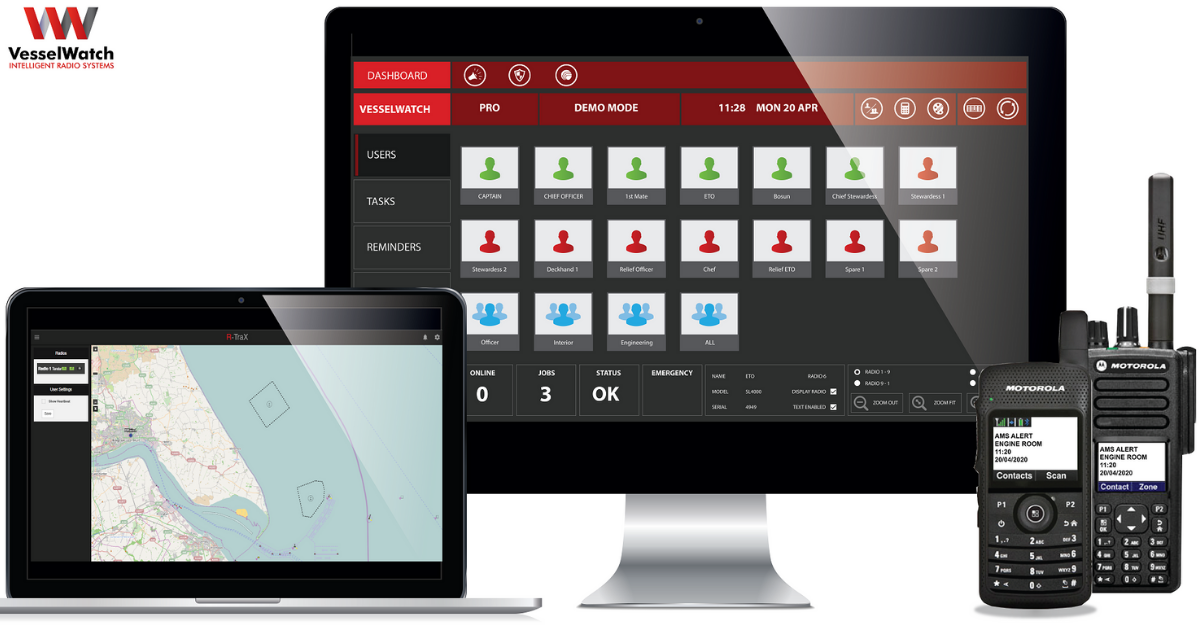Yacht Crew Insight: The Life of a Superyacht ETO

With an impressive career working in marine electrical engineering, superyacht refits and on board some of the world’s most advanced superyachts, Ryan Porter is an ETO who can confidently say he knows his stuff. Currently working on board an innovative 90+ metre superyacht, we spoke to Ryan about his journey to becoming an established yacht ETO and how he’s found that the multi-functional safety and communications system VesselWatch is one of the most useful pieces of superyacht tech for advanced safety and security at sea.
Tell us about yourself and your journey into yachting.
I grew up in the south-east of the UK and I left school at 16 to join a six-year apprenticeship scheme with a marine electrical company in Suffolk. I worked on tugs, trawlers and commercial vessels in the ship repair division, learning the trade, and I gained an HND in electrical/electronics. I was looking to expand my horizons, and a company asked me if I would be interested in a refit project on a superyacht owned by Roman Abramovich in Barcelona. I was 21 years old; my eyes lit up, and I went for it. I worked in Barcelona for four years, working on different yacht refits and repair jobs. Believe it or not, it was very similar to my apprenticeship working with greasy, rugged commercial vessels as the same principles applied.
How did you go from yacht refit projects in Barcelona to becoming a seasoned superyacht ETO?
I worked as a sole trader and bounced around for the first couple of years, from complex refit projects to complete AV upgrades. I also worked on some great technical superyacht projects with De Keizer Marine Engineering (ADK). In 2011 I was working on a boat called TITAN when I bumped into the stewardess on board. She’s now my wife, and we’ve been together for nine years! But it was my wife who initially suggested that I consider a position as an ETO. In all honesty, I’d never really thought about it. I looked at some of the guys working on board and the lifestyle that comes with it. I realised that I had the skills and the right attitude, so I decided to go for it.

Was it challenging to find your first ETO job on a yacht?
I went the classic yacht crew route when I was looking for a yacht job. I contacted all the crew agencies, went out to Palma and walked the docks, meeted and greeted… but it was tough. If you’ve never worked on a yacht before, it’s difficult to get that initial in that you need. Even as a fully qualified sparky with years of experience in marine engineering, I needed the specific yacht engineering certificates. I put the search on hold and headed out to Italy to work on another yacht refit project when I got a call from the Amiri Fleet. They were looking for an ETO on board the 124-metre Lürssen yacht Katara and did I want to go immediately? I ended up landing a fantastic job with a great salary and straight into rotation. I’ve never looked back!
What were some of the challenges involved in your new position as superyacht ETO?
I quickly shifted my skills towards AV and IT, and I learned it on the job versus getting out and doing qualifications. It was a challenge, but one that I enjoyed. The yacht itself wasn’t used that much, and I spent a lot of time experimenting to understand the mechanics behind everything; all the little teething problems and how to get stuff running again. I think that’s essential for a good ETO, understanding the mechanics behind how everything ticks.
The difference between an ETO and an AV IT guy is that you would not want your AV guy working on engines and switchboards, but if you have a good ETO, they should definitely be able to do both. I’ve built up a lot of expertise and contacts over the years. I also own a company selling tech equipment, YOT Store. Anything IT or AV onboard superyachts, it’s a one-stop-shop for everything tech onboard . I’ve been a busy man! With my experiences and my business partners we have found what this is missing in the industry and put together the solution.
When did you join your current 90+ metre superyacht?
I joined the crew when the yacht was still under construction last year. As with most superyachts of this size, privacy is a crucial responsibility of all crew members. I can’t tell you much, but she is a stunning yacht and one of the best charter yachts in the world, in my opinion. She’s also one of the most advanced yachts of the time, particularly in regard to her AV and IT systems and technology on board.

What are some of the most useful technological features of the boat for you as ETO?
It’s a long list, but the VesselWatch software is fantastic. We had the software installed during the build, and the guys were very reactive. I would recommend VesselWatch for vessels both large and small. The software does not require much attention, works seamlessly with Motorola software, and it’s one of those things that we as a yacht crew use daily, but we don’t even know we’re using it. It’s automatic. It’s a hassle-free system that works, and that’s pretty much it. Since delivery, we have needed very little support from the team, which is usually the sign of a sound system! Any minor issues we’ve had have been dealt with very quickly by our project guy. We feel like we’re looked after.
How does the VesselWatch software make a difference to both the crew and guest experience?
Improved safety and security is the crux of the VesselWatch software. The alert system is fantastic. For example, if there were ever a fire in the cabin, I would look at my radio, and it would tell me exactly which smoke head is off. I don’t have to go to the fire panel, and I do not need to liaise with anyone. The time this saves can be the difference between life and death in extreme circumstances. Depending on the radio, VesselWatch also enables engine room alarms coming through to the right people and is linked with our alarm monitoring system. It means we get straight to the problem, and sometimes time can be of the essence when dealing with these problems.
How well do the VesselWatch solutions integrate with Motorola hardware?
VesselWatch integrates very well with the Motorola hardware. We have the DP4801E Motorola radios for the engineers and officers, and for the interior crew, we have the Motorola SL400 radios which are small, slim radios. The DP4801E Motorola radio is a classic, bulky, radio. They’re excellent and allow us to talk to each other directly. VesselWatch also links in for the server stews, so the owner can be in his stateroom, press the custom service call button and send a direct request straight through to the stew radios. The owner doesn’t have to talk to anyone and receives a completely seamless service at the push of a button.

Since delivery last year, you’ve enjoyed a successful summer and winter charter season. How is the coronavirus crisis affecting life on board?
Right now we’re in the Americas, and we’ll be here for the foreseeable future. Day to day operations are generally as usual, and all the provisioning is done with masks, gloves and disinfectant. We’re taking it very seriously. In terms of the effect on the crew, some crew members haven’t been able to return from leave due to travel restrictions, and some of us won’t be able to take leave for the same reasons. We’re working with a skeleton crew, and we’re still managing. Though life on board is relatively normal, the intensity of the situation is stressful. But I’m a glass-half-full kind of guy, and I’m staying positive. It will come to an end, and we’ll all get through this.


Post your comment
You cannot post comments until you have logged in.
Login to post a commentComments
No one has commented on this page yet.
RSS feed for comments on this page | RSS feed for all comments